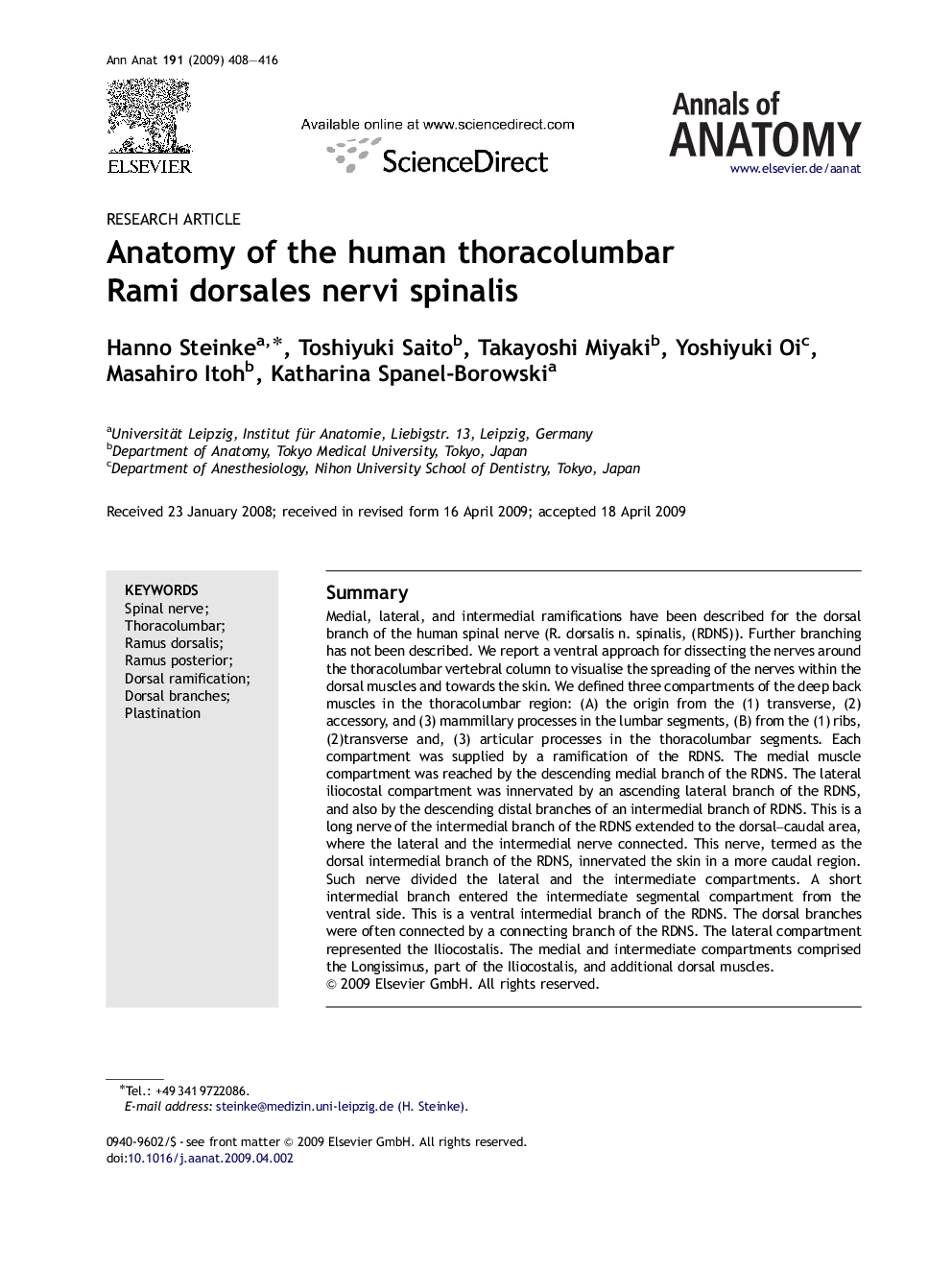| Article ID | Journal | Published Year | Pages | File Type |
|---|---|---|---|---|
| 8462422 | Annals of Anatomy - Anatomischer Anzeiger | 2009 | 9 Pages |
Abstract
Medial, lateral, and intermedial ramifications have been described for the dorsal branch of the human spinal nerve (R. dorsalis n. spinalis, (RDNS)). Further branching has not been described. We report a ventral approach for dissecting the nerves around the thoracolumbar vertebral column to visualise the spreading of the nerves within the dorsal muscles and towards the skin. We defined three compartments of the deep back muscles in the thoracolumbar region: (A) the origin from the (1) transverse, (2) accessory, and (3) mammillary processes in the lumbar segments, (B) from the (1) ribs, (2)transverse and, (3) articular processes in the thoracolumbar segments. Each compartment was supplied by a ramification of the RDNS. The medial muscle compartment was reached by the descending medial branch of the RDNS. The lateral iliocostal compartment was innervated by an ascending lateral branch of the RDNS, and also by the descending distal branches of an intermedial branch of RDNS. This is a long nerve of the intermedial branch of the RDNS extended to the dorsal-caudal area, where the lateral and the intermedial nerve connected. This nerve, termed as the dorsal intermedial branch of the RDNS, innervated the skin in a more caudal region. Such nerve divided the lateral and the intermediate compartments. A short intermedial branch entered the intermediate segmental compartment from the ventral side. This is a ventral intermedial branch of the RDNS. The dorsal branches were often connected by a connecting branch of the RDNS. The lateral compartment represented the Iliocostalis. The medial and intermediate compartments comprised the Longissimus, part of the Iliocostalis, and additional dorsal muscles.
Related Topics
Life Sciences
Biochemistry, Genetics and Molecular Biology
Cell Biology
Authors
Hanno Steinke, Toshiyuki Saito, Takayoshi Miyaki, Yoshiyuki Oi, Masahiro Itoh, Katharina Spanel-Borowski,
